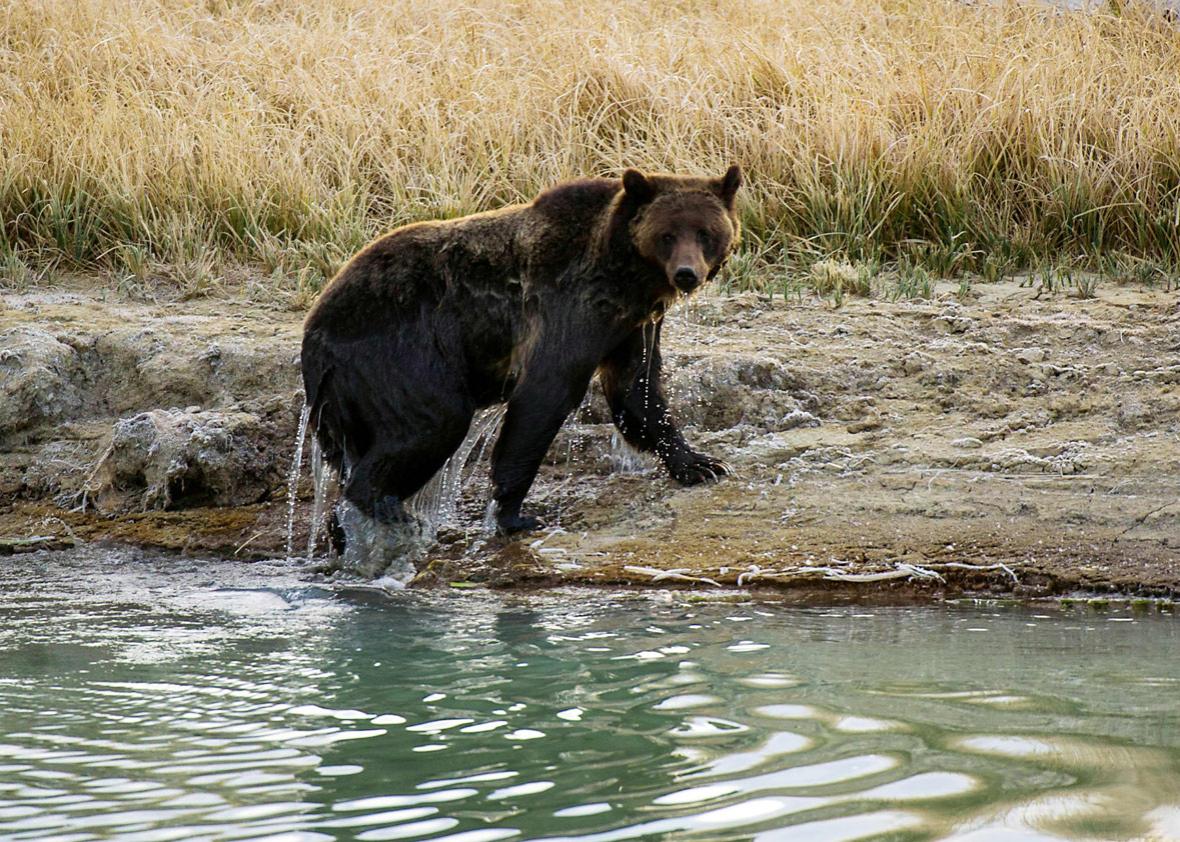Interior Secretary Ryan Zinke announced Thursday that the Yellowstone grizzly bear will no longer be listed as protected under the Endangered Species Act. The grizzly’s population has rebounded and it now “stands as one of America’s great conservation successes,” he crowed.
A species being removed from the ESA is rare and, in normal circumstances, should be celebrated. It means that a population has recovered enough to no longer require extra protections, which should be considered a good thing. And the grizzly bear has: When the species was listed in the 1970s, it was estimated that a mere 150 existed. Today, there are about 700 individuals.
This decision, however, seems unlikely to be met with applause. As the New York Times reports, environmental organizations are already lining up to sue to stop it. And 125 Native American tribes have banded together to oppose the delisting because they weren’t consulted in the decision-making. Also, any good feelings animal lovers get from the words “conservation success story” are likely to be squashed by the fact that the delisting means the bears could now be hunted. People really don’t like it when charismatic megafauna get killed.
Should the grizzly bear be delisted—or this just yet another awful environmental move by the Trump administration, divorced from science and decency? One political litmus test is to check what the Obama administration thought of the grizzly bear’s fate. In March 2016, Dan Ashe, then the director of the U.S. Fish and Wildlife Service, defended the delisting. And the recovery numbers do look strong (700 sure sounds small, but Yellowstone grizzlies are a top-of-the-food-chain predator living in a small land mass—what matters more is the populations’ stability, not its size).
But scientists have dramatically different opinions about how to read those numbers. Luke Whelan over at Wired has a good rundown of how the two sides of the debate see the issue. One school of thought says that because the bears’ populations have plateaued, that means they’ve hit the carrying capacity, or the number of animals the habitat can sustain, and are in good shape. Under this logic, delisting makes sense. The counterargument suggests that the carrying capacity is lower than it should be because its habitat and food sources have changed since the bear was listed in the ’70s, primarily due to climate change—which means that the bear needs to stay protected. In fact, most of the environmental groups planning to sue over the move basically want to keep the bear listed because of the threat climate change will increasingly pose. And climate change does pose a threat—warmer temperatures are causing white pine beetles to move further and further into grizzly habitat, killing pine trees and hurting a critical food source.
Who’s right? It’s hard to say definitively—it depends on how you read the science, and how you think the ESA should be applied based on that science. Arguing that climate change is going to pose a threat to an animal and therefore warrants (somewhat) proactive listing is a tough sell—honestly, on a long enough scale, climate change and the cascading food chain and habitat problems could justify listing most animals on the ESA. That would be an interesting precedent to set. It’s also unclear how ESA protection could help address the pine beetle problem. The ESA has limited resources and offers limited protections—indeed, many conservationists think it is actually most successful when wielded as a stick to inspire (or coerce) proactive solutions before a species requires listing, rather than as a real way to solve environmental problems. And through that lens, it’s clear that what the grizzly bear really needs is for climate change to be taken seriously, and minimized. The ESA can’t force that—it’s not equipped to.
But that brings us to the crux of the problem. The debate around the grizzly bear’s health is intimately connected to a debate over the threat climate change poses to the species. There is no logical way to have a real conversation about these problems right now. I do not trust Ryan Zinke to cautiously consider how climate change threatens grizzly bears, whether that warrants them staying listed, or whether that means his agency ought to take other steps to address climate change because it threatens grizzlies. Ryan Zinke is frankly an idiot when it comes to climate change. Just watch how he discussed it with Al Franken on Tuesday—he refused to even answer a simple question on what government scientists estimate the impact of climate change will be by the end of the century.
When the government is this bad at accepting basic truths, it makes it hard to have faith that their decisions are good ones—even decisions that seem positive or reasonable. It also creates a world in which we have to fight to keep species listed on the ESA because we know we’re not going to do much else to stop climate change from screwing them over in the long run. It is exhausting and demoralizing to live in a world like this.
